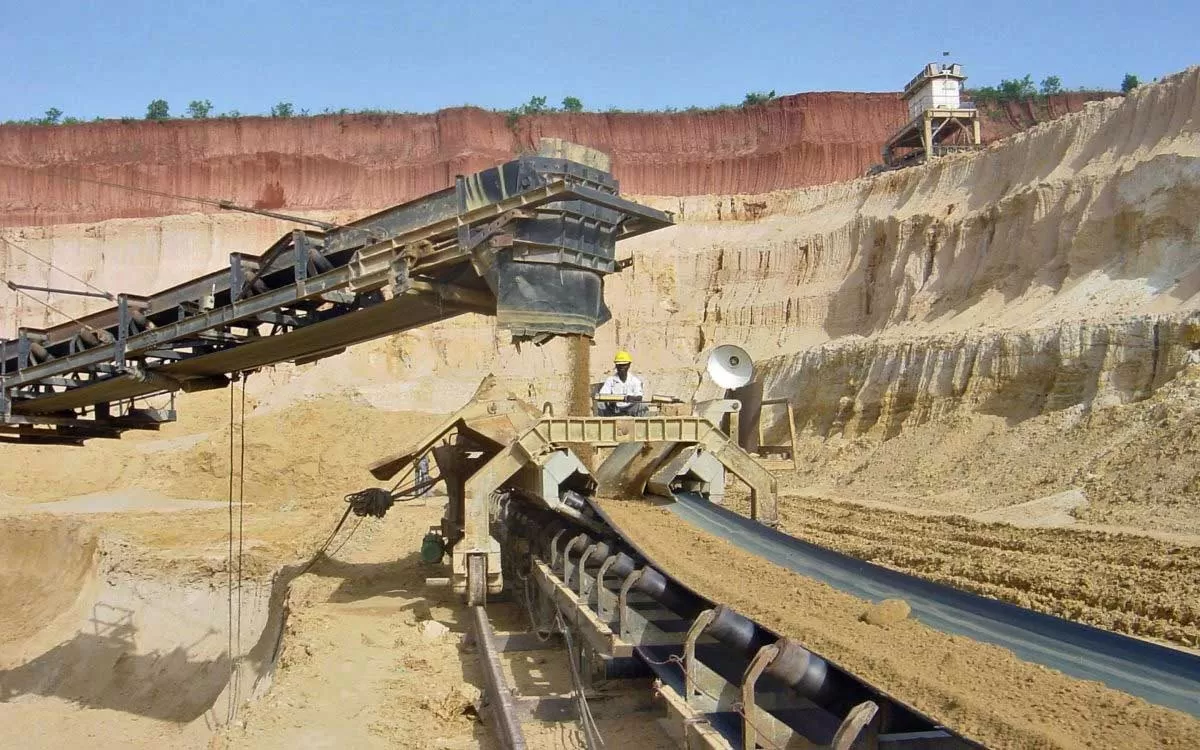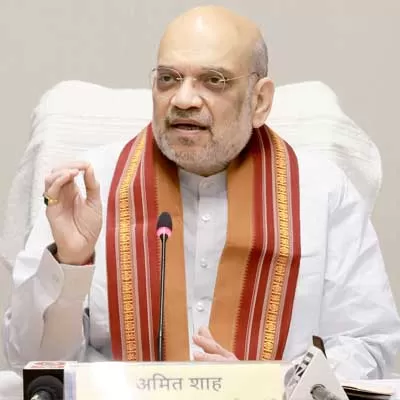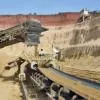With India emerging as the leading destination for global outsourcing of IT services, the development of IT parks is on the fast track.
According to a recent report by the Indian Brand Equity Foundation, the country's IT industry is expected to triple its current annual revenue to reach $350 billion by 2025. Not surprising, as India is the leading destination for global outsourcing of IT services, with the industry employing a workforce of about 10 million. Apart from several global IT companies investing in the country, many Indian firms, including several start-ups, are also contributing to the growth. Consequently, there is a surge in demand for IT parks, which are considered the ideal workplaces owing to their world-class working conditions and amenities.
'The IT and ITeS sector is the biggest contributor to prime office space absorption in cities as these companies seek efficient workplaces,'points out Vinod Rohira, Managing Director & CEO, Commercial Real Estate & REIT, K Raheja Corp.
'The state-of-the-art infrastructure, good connectivity and affordable price points have led to an excellent trajectory for the commercial real-estate market in India.'
The growth
Indeed, several world-class IT parks in India built by private developers like DLF, L&T, Hiranandani Group, Mantri Developers, K Raheja Corp, Ascendas, Tata Realty, Shapoorji Pallonji and Emaar, are driving the billion-dollar IT industry. In addition, several state governments and their agencies have been involved in the development of IT hubs, such as Andhra Pradesh Industrial Infrastructure Corporation, Karnataka Industrial & Areas Development Board, Tamil Nadu Industrial Development Corporation, and City and Industrial Development Corporation of Maharashtra.
Today, many of these IT parks are largely concentrated in metros like Bengaluru, Chennai, Hyderabad, Pune, Mumbai, Kolkata and Delhi, leading to land cost escalations, high operating costs, migration of resources and infrastructure issues like heavy traffic jams. However, with the industry's growth and space shrinkage in these cities, IT park developments are expected to move to other cities. In fact, many software companies have already begun shifting to Tier-II cities like Ahmedabad, Kochi, Coimbatore, Indore, Lucknow, Jaipur, etc.
'Access to talent pools is the most important driver behind location choice for IT companies,'explains Ramesh Nair, CEO & Country Head, JLL India. 'Other factors include real-estate costs, government policies, infrastructure, and transportation links. Agglomerative forces are another major driver. Dense clustering may be particularly beneficial to tech firms as these companies gain from the social, technical and commercial connections they have with other firms in the same or similar industry.
According to a recent JLL report, Mumbai, Bengaluru and Delhi-NCR are the markets where tech firms occupy >20 per cent of Grade-A office stock, whereas Bengaluru and Delhi-NCR are markets where tech firms occupy >20 per cent of the business park stock.'
The biggest issue in many Tier-II cities is the lack of quality infrastructure that needs to be upgraded, requiring huge investments. A PPP can work wonders here, opine industry pundits. Many IT parks world over have been developed through PPP. In India, however, it has not gained momentum in this sector.
That said, the Central Government's supportive policies and measures have no doubt been a catalyst to the development of IT parks. These include the formation of The National Association of Software and Services Companies (NASSCOM) in 1988 and the establishment of Software Technology Parks of India (STPI) to provide tax incentives and services to registered units. Many state governments, too, have been proactive with FSI incentives, flexible land use, etc.
The trends
For their part, IT parks have evolved over the years since they first appeared in India. 'Dedicated IT park development started in India in the mid-2000s, when large Indian IT conglomerates created large self-sustained campuses to support their internal growth,'elaborates Gurjot Bhatia, Managing Director, Project Management Group, CBRE India. 'Initially limited to the metros, these organisations are now rapidly expanding to Tier-I and Tier-II cities, primarily owing to the resource pool. Taking a cue from this, developers began building large, self-sustainable IT parks that included retail, residential spaces, hotels, hospitals and schools. Moving forward, IT parks are tending towards becoming cities in themselves. In addition, the government's Smart Cities initiative has indirectly forced these developments to incorporate sustainability measures.'
Rohira concurs, saying, 'With growing awareness of the benefits of green building, both developers and clients are focusing on sustainability. It is also about offering holistic solutions to all business requirements within the campus. Hence, today, IT parks come with modern amenities like WiFi connectivity, health clubs, landscaped gardens, coffee shops, restaurants, medical clinics, five-star hotels, banks and ATMs.'
K Raheja Corp has developed nine IT parks spread across the Mumbai Metropolitan Region, Gandhinagar, Hyderabad and Pune under the brand names Mindspace and Commerzone.
Nair highlights yet another trend: 'JLL continues to see a separation of people and data storage facilities globally as office occupiers are increasingly housing their racks in co-location facilities. By moving them offsite, occupiers have more flexibility in their office layouts, are not compromised in office lease renewal negotiations, and minimise risk of downtime by housing data within a purpose-built, efficient facility with dedicated staff responsible for 24 x 7 monitoring.'
The potential
With IT parks poised for high growth, the demand for commercial real estate is only bound to increase, opening immense opportunities for developers. Reportedly, out of a stock of 450 million sq ft of office space pan India, 65 per cent will be absorbed by the IT and ITeS sector. And several state governments are already planning more IT parks. While the West Bengal Government is optimistic of developing seven new IT parks, Andhra Pradesh is planning one IT park in all district headquarters, and Kerala State Information Technology Infrastructure with a land bank of about 1,000 acre is planning several in the state.
In addition, IT parks often trigger the development of infrastructure and real estate in the vicinity. Flexible land-use policies by some state governments have opened up another opportunity for developers who can bundle IT office space construction with facilities like shopping malls, hotels and housing.
As such, IT parks are expected to provide an array of facilities, as Bijay Agarwal, Managing Director, Salarpuria Sattva Group, points out. 'Apart from having spacious, clean and open floor plates, IT parks must offer high flexibility to enhance the layout based on the tenant's business requirement and eco-friendly design for sustainable growth. Amenities such as food court, crFche, gymnasium, advanced security and surveillance systems and adequate parking space are required to be provided.'Salarpuria Sattva has developed 20 IT parks in Bengaluru.
Typically, the development of IT parks involves the acquisition of land at the ideal location, obtaining necessary statutory clearances from the government and, of course, construction, all of which involve huge investments. 'The cost for these developments vary regionally and are subject to various factors but as a guide, the construction of the civil structure including high-side services (excluding interior works and cost of land) will range from Rs 2,750 to Rs 4,000 per sq ft,'shares Bhatia. 'Incorporating sustainability features could add up to 10 per cent to the construction cost. Leasing cost varies from Rs 40 to Rs 110 per sq ft per month.'
As in commercial spaces, IT companies largely opt for leasing. 'They prefer to lease space in IT parks so that their capital is not blocked in non-core assets,'reasons Agarwal. 'They prefer to use the funds in their core business.'
The challenges
The obstacles to the development of IT parks in the country have mostly been land cost and availability, quality of infrastructure, delayed approvals, and environment clearances. Industry professionals have been demanding policy measures to streamline approval processes like a single-window clearance, additional tax incentives and new funding instruments.
'Large developments like IT parks need dedicated supply of power, water and transport, and the state governments should be addressing these as part of urban development initiatives,'avers Bhatia. 'Single-window clearance for approvals, a major pain point, needs to be addressed too. The government should offer incentives for adopting sustainable measures, like increased FAR, subsidies on power, tax rebates, etc. While the aforementioned have been addressed in a piecemeal basis by some state governments, a nationwide policy is required.'
Evidently, with supportive policies and an enabling environment, there is enormous potential for growth in this sector - exciting times lie ahead!
View from the Other Side
'The single-window clearance for construction and purchase of land should be more effective and the government should ease the complications faced by IT organisations with respect to land mafia while constructing.
The government should also emphasise more on sustainable power or renewal power subsidy,'says Nagendra Sharma, Senior Manager-Real Estate & Facilities, Oracle India.
Oracle specialises primarily in developing and marketing database software and technology, cloud engineered systems and enterprise software products. The company has two parks - one in Bengaluru and one in Hyderabad, and is coming up with a campus in Bengaluru, the second largest outside the US.
Number of Operational IT and IT SEZ Buildings in India
Bengaluru: 249
Chennai: 146
Hyderabad: 87
Kolkata: 39
Mumbai: 166
NCR Delhi: 172
Pune: 144
Total: 1,003
Key Upcoming IT and IT SEZ Buildings (2017-2019)
- Bengaluru: Divyasree Tech Park, BCIT, Hinduja Ecopolis, SJR Spectrum, Global Village Tehnology Park.
- Chennai: Ramanujan IT City, ETA Technopark, Shriram The Gateway, DLF IT Park, Chennai One.
- Hyderabad: Divyasree Orion, TSI Waverock, KRC Mindspace, The V IT Park, Phoenix Avance.
- Kolkata: Infinity Magnacon, Unitech Infospace, Bengal Eco Intelligence Park, Intellohub.
- Mumbai: Gigaplex, Nesco IT Park, Mindspace, Loma IT Park, Newa IT Knowledge Park.
- NCR Delhi: Oxygen SEZ, DLF Platina, Digital Greens, International Tech Park, Brookfield Tech Space.
- Pune: Commerzone, EON Free Zone, Cybercity, International Tech Park, SP Infocity.
Developers with Upcoming IT Parks
Salarpuria Sattva Group: Knowledge City at Hitech city, Knowledge Capital and Knowledge Park in Hyderabad; two projects in Whitefield and one in Electronic City, Bengaluru; Techpoint and one other project at Kharadi, Pune. K Raheja Corp: Commerzone, Porur, Chennai.
- JANAKI KRISHNAMOORTHI


















